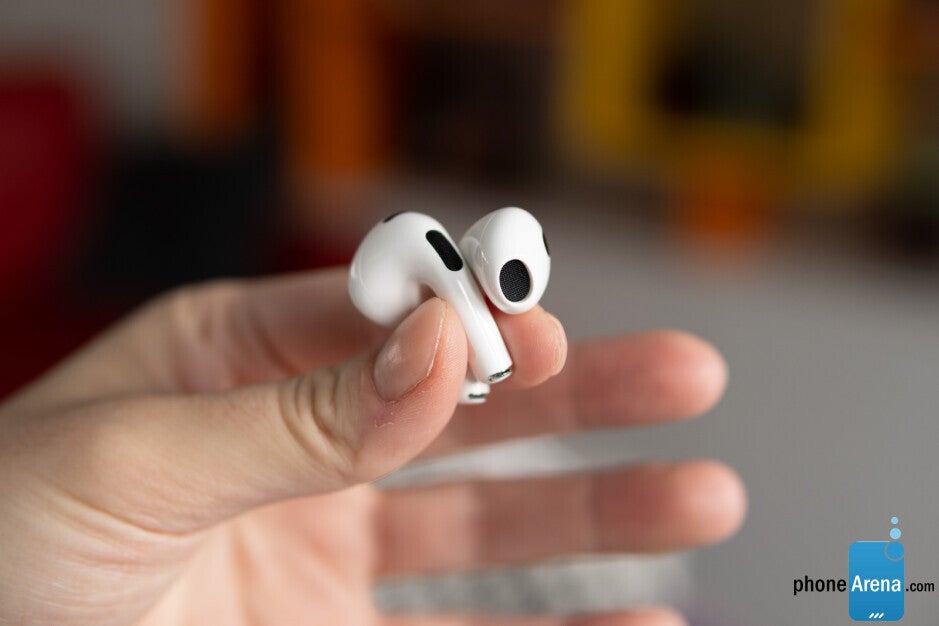Apple asks for patent on system that allows AirPods to give real time feedback when exercising

Apple has filed a patent application with the US Patent & Trademark Office (via AppleInsider) with the title "Wireless Ear Bud System With Pose Detection." The patent applicationexplains how the earbuds can detect the positioning of the user's head and use that data in conjunction with an iPhone to send coaching and feedback through the earbuds during workouts and fitness routines.
The earbuds would use sensors and accelerometers to collect information about the orientation of the user. The patent application says, "A host electronic device may communicate wirelessly with the ear buds and may form part of an ear bud system that supplies the user with coaching and feedback while evaluating user performance of a head movement routine or other exercise routine."
In the future, AirPods could help Fitness+ users do their exercises correctly
Apple also notes in the patent application that "Feedback such as audible feedback may be provided to a user based on evaluation of user performance of the head movement routine. Other suitable actions may be taken such as issuing performance reports and alerts."

Apple files for a patent that will allow AirPods to teach users how to do certain exercises correctly
The patent application documentation notes that by determining which pose is being performed during an exercise, the pose can be compared to a "desired sequence of poses associated with a head movement exercise routine." If the user was supposed to perform neck stretches in a left-forward-right-backward order, the technology can determine whether the pose that was made by the user is considered the desired pose and has "occurred in a timely fashion."
Now here is the interesting part. If a pose is performed unsatisfactorily by taking place at the wrong time, or in the wrong order, the user would receive negative feedback such as hearing a harsh buzzer tone. If the user performs the pose correctly, positive feedback would be played over the earbuds (such as a pleasant chime). Users could also receive guidance that is audible, visible, and/or haptic.
"The guidance could take the form of spoken commands, text, audio clips, diagrams, videos, and other methods that help guide the user through the routine. For example, the guidance may include an overview of the goals of the routine, information on suitable preparation for the routine (e.g., preparatory head movements and body stance), and real-time guidance such as step-by-step directions provided during the routine."
Later in the patent application, Apple says that a device with a screen can show the desired pose. These devices include "a cellular telephone, tablet computer, desktop computer, television, or other device." If during the routine, the system detects that the user is out of breath or otherwise experiencing a sudden health issue, the exercise guidance can be immediately terminated.
In the scenario where there is a health issue, the user could receive an alert that tells him that he needs to stop exercising. And upon completion of the exercise routine, the user could receive a performance report or have one uploaded to an online service.
System revealed in the patent application can also improve the delivery of Spatial Audio
The patent application says that tips could be handed out to the user telling him how to improve his performance for next time. For example, such advice might say, "next time roll slower."
Besides using the technology discussed in the patent to coach users through their workouts, using AirPods to track the position of the user's head can also help in the dissemination of spatial audio. Used by more than half of Apple Music's subscribers, Spatial Audio streams music in three-dimensional space allowing the listener to distinguish sounds that are coming from in front of him, behind him, and below him.
By knowing the positioning of the user's head, the audio stream can be precisely delivered to recreate the location of each sound in the three-dimensional space when it was recorded.










Things that are NOT allowed: